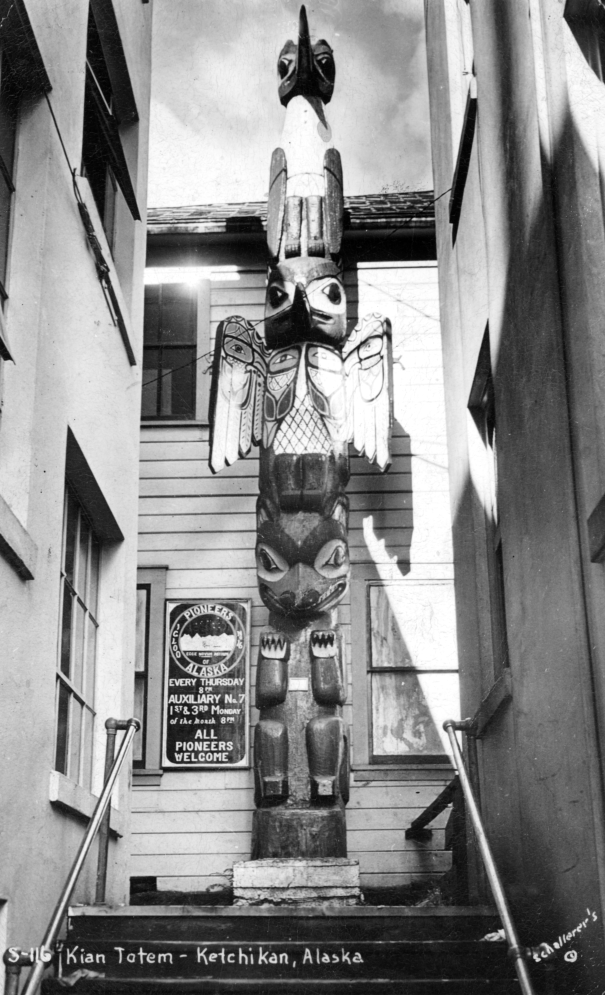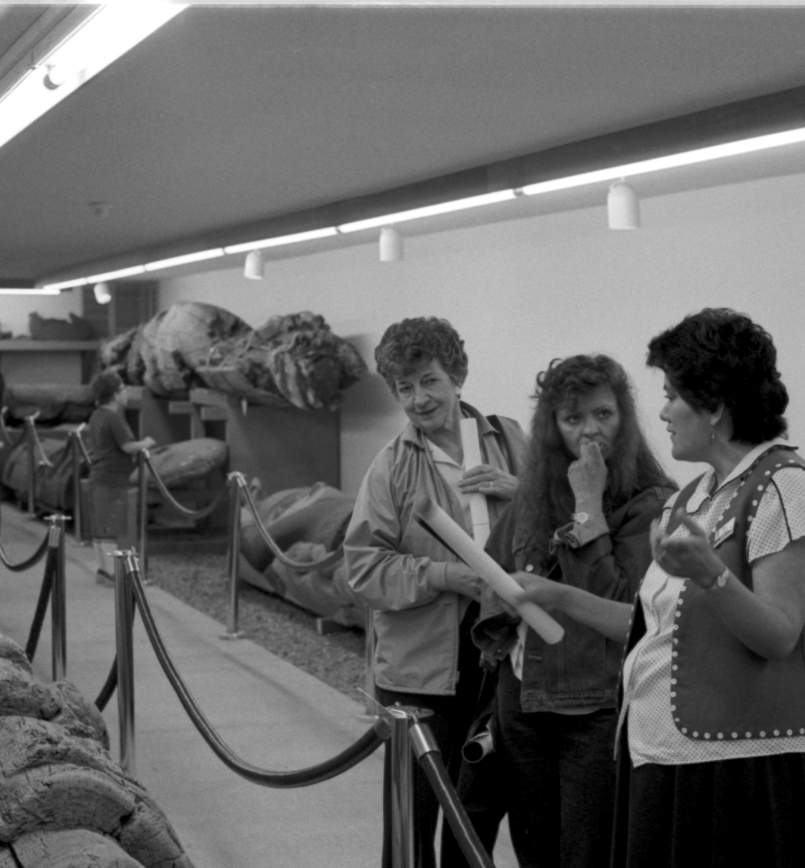Ketchikan Museums History & Mission
Our Mission: Ketchikan Museums collect, preserve, interpret and creatively share the history and culture of our region to serve, educate, engage and enrich our community.
Our core values include discovery, community identity, integrity, and communication.
Ketchikan Museums History & Mission
Our Mission: Ketchikan Museums collect, preserve, interpret and creatively share the history and culture of our region to serve, educate, engage and enrich our community.
Our core values include discovery, community identity, integrity, and communication.
KETCHIKAN MUSEUMS:
Ketchikan Museums’ History

Chief Kyan Totem Pole at Pioneer Hall, circa 1945. Photo by Otto Schallerer. THS 73.7.17.4
Like many small town museums, our story begins with community members who had a passion for history. The Xi Alpha Chapter of Beta Sigma Phi and local resident Ralph Bartholomew independently developed plans for the formation of a local historical society to share and document Ketchikan’s history. With the encouragement of City government and Mayor Richard Hardcastle, community meetings were held and, in 1961, the Tongass Historical Society was born.
Society members started displaying memorabilia in local businesses until 1962, when the City offered space in the former jail section of City Hall. The 363 square foot space housed cases donated by local merchants and was open one evening a week. The first employee, Aileen Jones, began keeping records.
As Ketchikan began planning to commemorate the 1867 Alaska Purchase Centennial, the Tongass Historical Society formally incorporated and helped lobby for community support for an exhibition center. A bond issue for $1.2 million was approved by voters and the Centennial Building, the location of the current museum, opened on September 4, 1967. With the new space, donations of objects flowed in steadily, as did visitors. The Society was granted further City assistance to keep the building properly maintained with open regular hours and paid museum attendants.
After the Centennial celebration in 1968, several exhibits were disassembled and the public library moved in to share approximately 60% of the building. Museum staff grew to include a Director, Curator and Secretary.
MOMENTUM FOR PRESERVATION
The Beginning of a Totem Pole Collection
At this same time, a movement to preserve totem poles in the area was gaining momentum. In 1967, the Alaska State Museum surveyed southern Southeast Alaska Native villages for totem poles. In conjunction with the Alaska Native Brotherhood and Sisterhood and the Ketchikan Museum Director, the State Museum arranged for the totem poles with enough structural integrity to be transported to Ketchikan for preservation. The goal was to build a cultural center using the totem collection as a focal point.
The totem collection stayed in storage at Sunny Point Cannery for seven years while various groups debated responsibility and funding. The City donated land and was awarded an Economic Development Administration grant to build the Totem Heritage Center, which opened in November 1976. An additional curator was hired by the City in 1976 to operate the Center.
A DEDICATED HOME
Drawing Visitors from Around the World
The Ketchikan Public Library moved into a new facility in 2012 and a phased plan began to renovate the Centennial Building for the sole use as a museum. In 2017, a main floor renovation provided expanded exhibition space, a dedicated program space as well as ADA-compliant public restrooms. The first exhibition in the feature gallery debuted in 2017, with the first core exhibition opening in 2018.
The Museum Department has grown from a single museum attendant in a renovated jail cell in the 1960s to two thriving facilities staffed by professional curators and educators. The services have expanded from small, temporary displays to inspiring interpretive exhibits and programs for locals and visitors from around the world.
